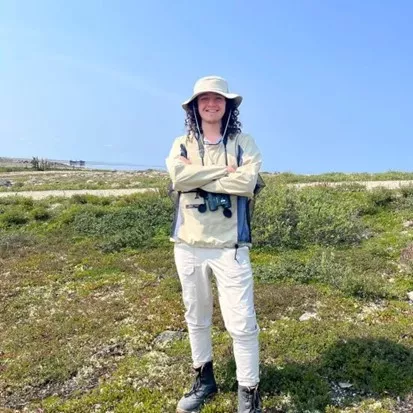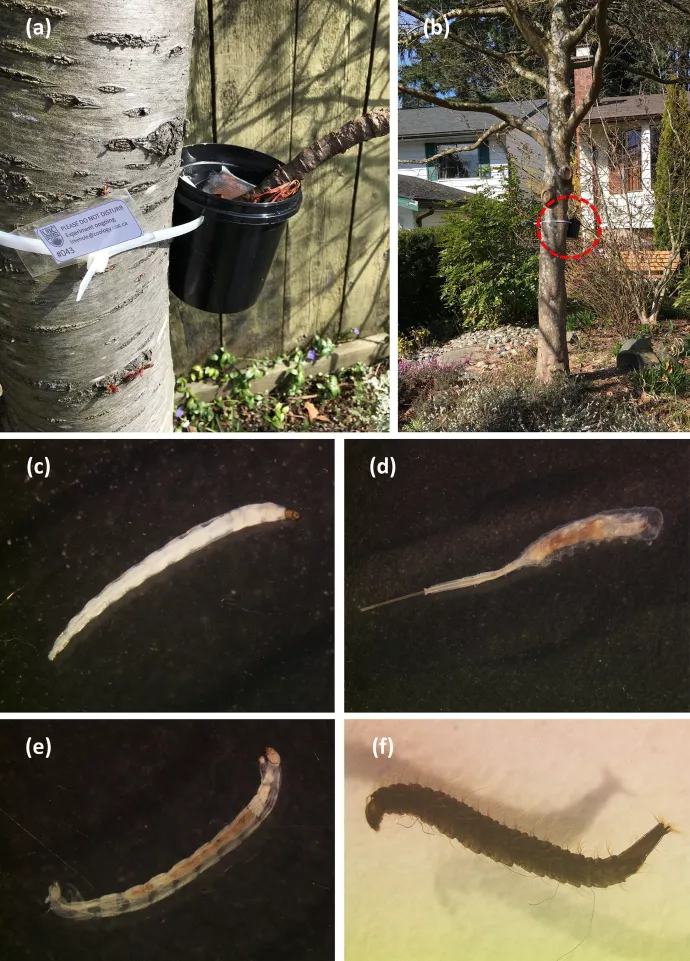
Noam Harris' paper in Ecology
Noam Harris is a 1st-year M.Sc. student in the Kotanen lab. Raised in Vancouver, B.C., Noam has long been interested in plants and ecology. Through his undergrad at the University of British Columbia, he developed these interests, leading to a self-directed honours project under the supervision of Professor Diane Srivastava. During the summer of 2021, Noam spent countless hours in the field and lab examining the effects of urbanization on naturally contained tree hole communities. Through an extensive field survey covering a range of over 90km, Noam measured effects of various environmental variables associated with urbanization on biodiversity and ecosystem functioning in tree holes. Noam graduated from the University of British Columbia with distinction – after successfully defending his thesis -- and now studies the effects of mosses, lichens, and vascular non-native plant invasions in the Canadian arctic. He hopes to pursue a research-driven career, further exploring spatial ecology and interspecies interactions.
Ecology published his research: Insects in the city: Determinants of a contained aquatic microecosystem across an urbanized landscape
https://doi.org/10.1002/ecy.4204
https://esajournals.onlinelibrary.wiley.com/doi/full/10.1002/ecy.4204
Cities can have profound impacts on ecosystems, yet our understanding of these impacts is currently limited. First, the effects of the socioeconomic dimensions of human society are often overlooked. Second, correlative analyses are common, limiting our causal understanding of mechanisms. Third, most research has focused on terrestrial systems, ignoring aquatic systems that also provide important ecosystem services. Here we compare the effects of human population density and low-income prevalence on the macroinvertebrate communities and ecosystem processes within water-filled artificial tree holes. We hypothesized that these human demographic variables would affect tree holes in different ways via changes in temperature, water nutrients, and the local tree hole environment. We recruited community scientists across Greater Vancouver (Canada) to provide host trees and tend 50 tree holes over 14 weeks of colonization. We quantified tree hole ecosystems in terms of aquatic invertebrates, litter decomposition, and chlorophyll a (chl a). We compiled potential explanatory variables from field measurements, satellite images, or census databases. Using structural equation models, we showed that invertebrate abundance was affected by low-income prevalence but not human population density. This was driven by cosmopolitan species of Ceratopogonidae (Diptera) with known associations to anthropogenic containers. Invertebrate diversity and abundance were also affected by environmental factors, such as temperature, elevation, water nutrients, litter quantity, and exposure. By contrast, invertebrate biomass, chl a, and litter decomposition were not affected by any measured variables. In summary, this study shows that some urban ecosystems can be largely unaffected by human population density. Our study also demonstrates the potential of using artificial tree holes as a standardized, replicated habitat for studying urbanization. Finally, by combining community science and urban ecology, we were able to involve our local community in this pandemic research pivot.

